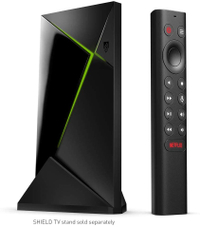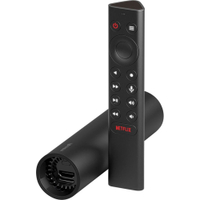Nvidia Shield TV vs. Nvidia Shield TV Pro: What's the difference?
The Nvidia Shield TV and Nvidia Shield TV Pro have more similarities than differences, but it's worth checking out both.
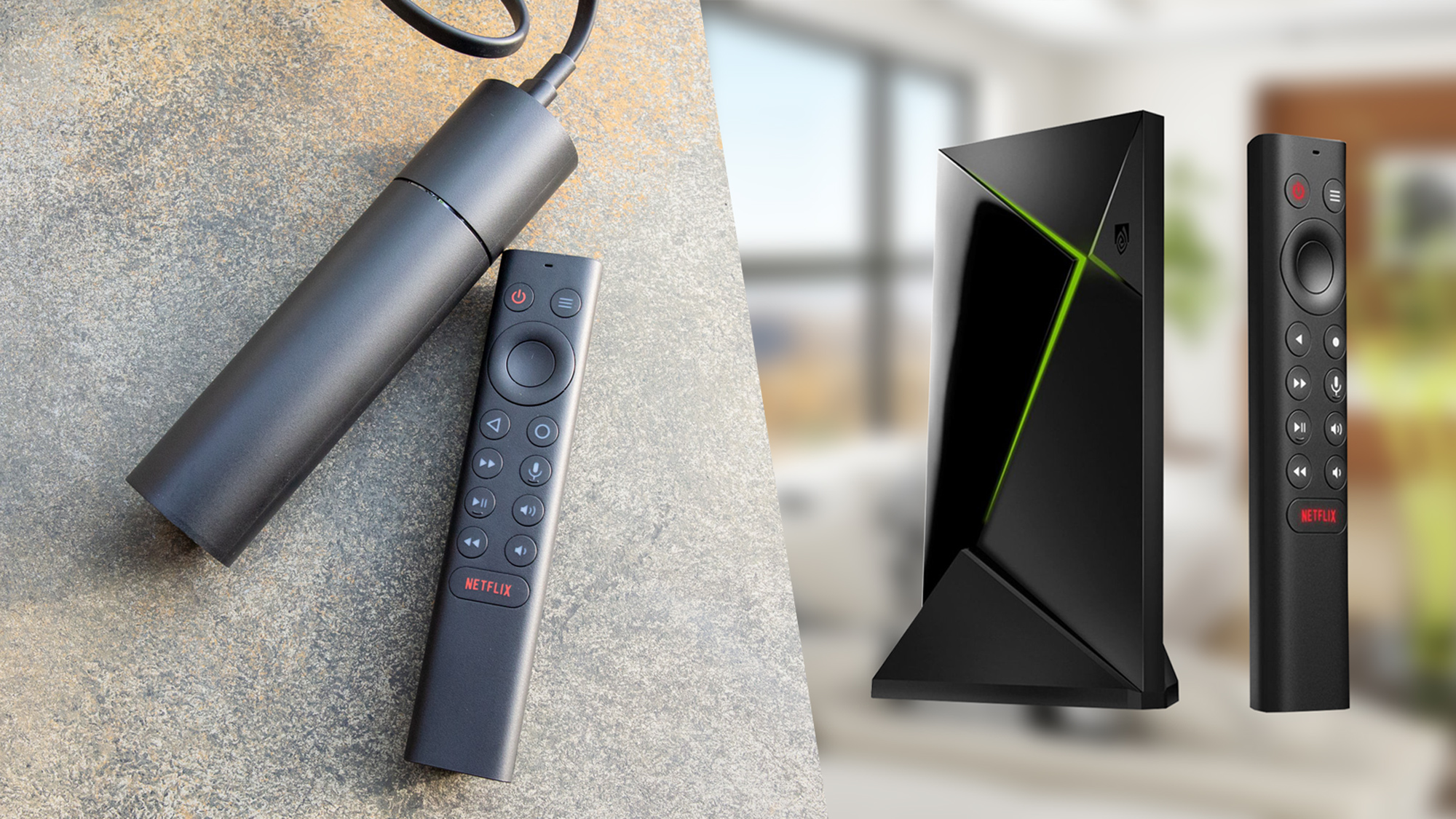
It's no secret that I'm rather fond of the Nvidia Shield TV. This high-end streaming player combines a sleek Android TV interface with ambitious AI upscaling and impressive gaming capabilities. However, as I mentioned in the review, the Shield TV comes in two flavors: default and Pro.
The Nvidia Shield TV ($150) and Nvidia Shield TV Pro ($200) have more similarities than differences. But still, if you're looking for the best streaming device, it's worth familiarizing yourself with both gadgets. Don't worry; there are only a few key points to keep in mind. Here’s how the Shield TV and Shield TV Pro stack up.
Nvidia Shield TV vs. Shield TV Pro: Specs compared
| Row 0 - Cell 0 | Nvidia Shield TV | Nvidia Shield TV Pro |
| Price | $150 | $200 |
| Processor | Tegra X1+ | Tegra X1+ |
| RAM | 2 GB | 3 GB |
| Storage | 8 GB | 16 GB |
| Ports | Power, HDMI, Ethernet, microSD | Power, HDMI, Ethernet, USB (x2) |
| Smart home features | Alexa, Google Routines | Alexa, Google Routines, Samsung SmartThings |
Design
Arguably the biggest difference between the Shield TV and the Shield TV Pro is aesthetic. The Shield TV Pro looks almost identical to the last-gen Shield TV: an angular black box with green highlights at tasteful locations. It's an attractive player, but it's not radically different from an Apple TV or Roku box, save for being a little bit longer.
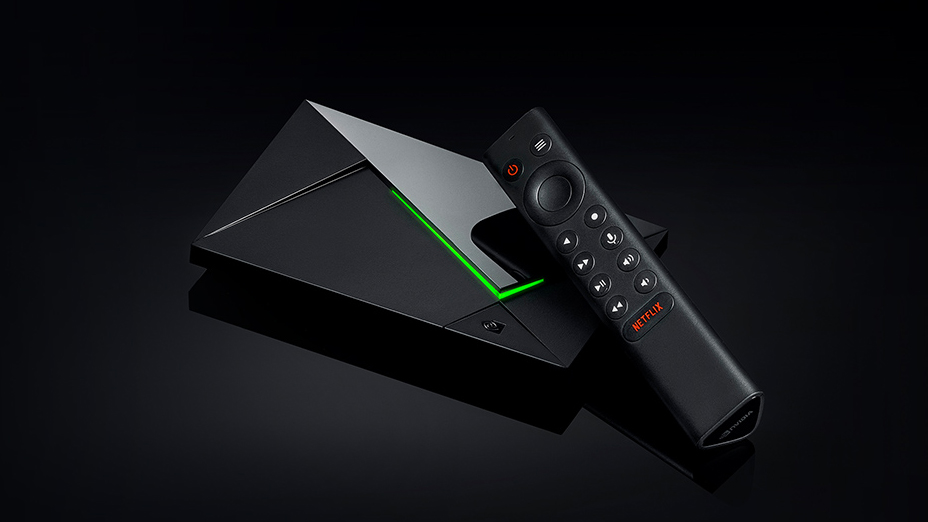
The Shield TV, on the other hand, has had a top-to-bottom redesign. Instead of a box, the device is a big black cylinder, sort of like a giant cigar tube. You run the power through one side and the HDMI through the other, so it should sit nicely in most entertainment centers. While I was skeptical at first, the Shield TV's odd design won me over, although I think it's going to earn as many detractors as fans.
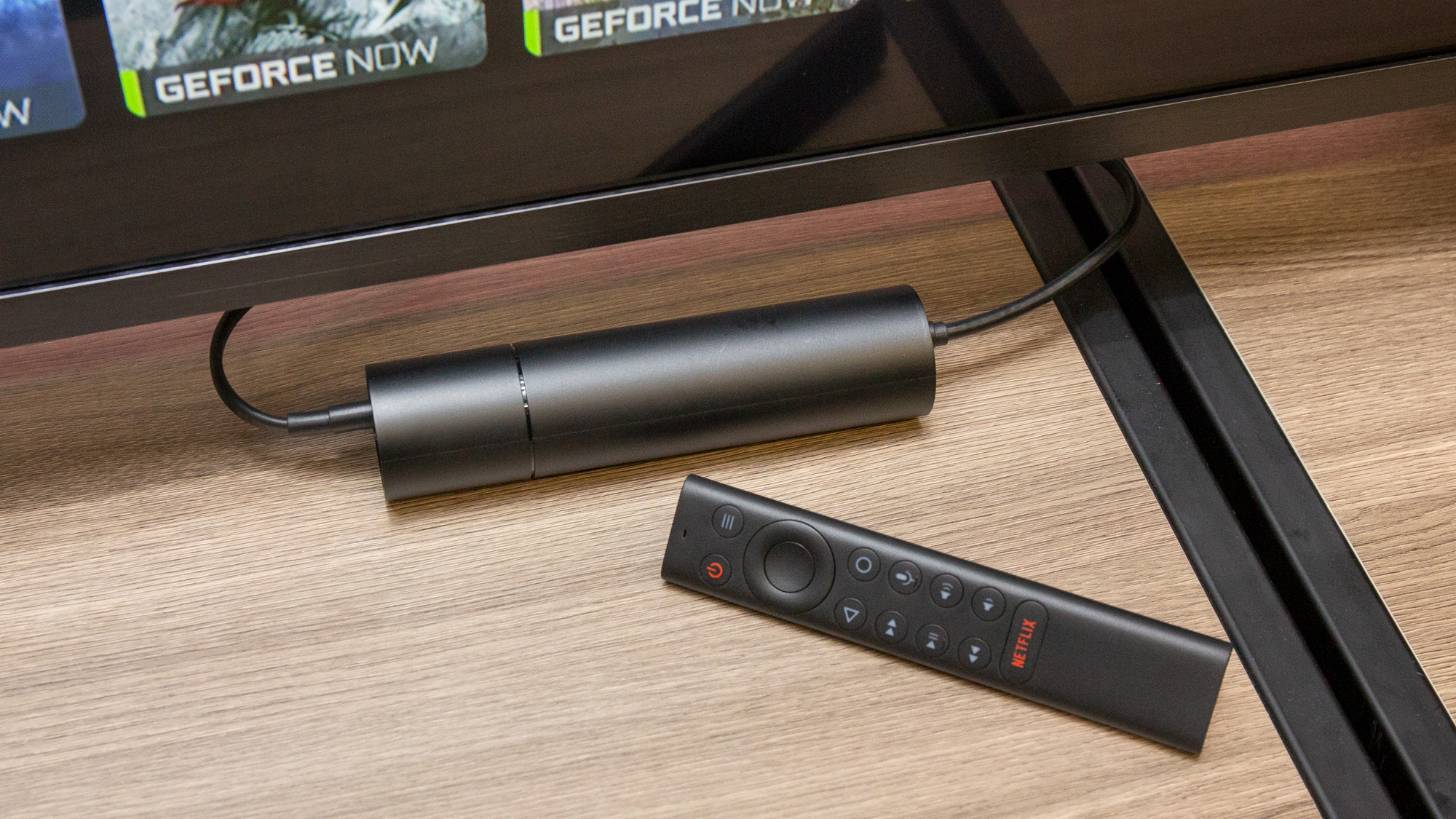
Both devices have Ethernet ports. The difference between the two is in how they handle expandable storage. While the Shield TV has a microSD card slot, the Shield TV Pro has two USB slots. As such, you can expand storage on both devices, but the Shield TV's solution is a little prettier, while the Shield TV Pro's solution is a little more versatile.
Because the Shield TV Pro accepts USB drives, it also has more smart-home options than the standard Shield TV, but we'll get to that a little later.
Specs
One fairly major difference between the two gadgets is how much power they offer under the hood. First, both devices contain a Tegra X1+ processor, meaning that they can both take advantage of the Shield TV's ambitious AI upscaling protocol. They're also both good at running video games, whether on their own hard drives or through the surprisingly robust GeForce Now game-streaming service.
However, as its name suggests, the Shield TV Pro is a much more powerful device. Whereas the regular Shield TV contains 8 GB storage and 2 GB RAM, the Pro offers 16 GB storage and 3 GB RAM. Whether that's worth an additional $50 is up to you, but if you're interested in running some of the Nvidia-exclusive Android-optimized console games, the Pro is your only option. These include titles like Half-Life 2, Tomb Raider (2013) and Borderlands: The Pre-Sequel. Fair warning, though: There aren't that many of these games, and GeForce Now runs them better anyway.
Content and features
The performance differences between the Shield TV and the Shield TV Pro may not be night and day, but the Pro does confer two huge benefits: expanded smart-home functionality, and the ability to host a media server.
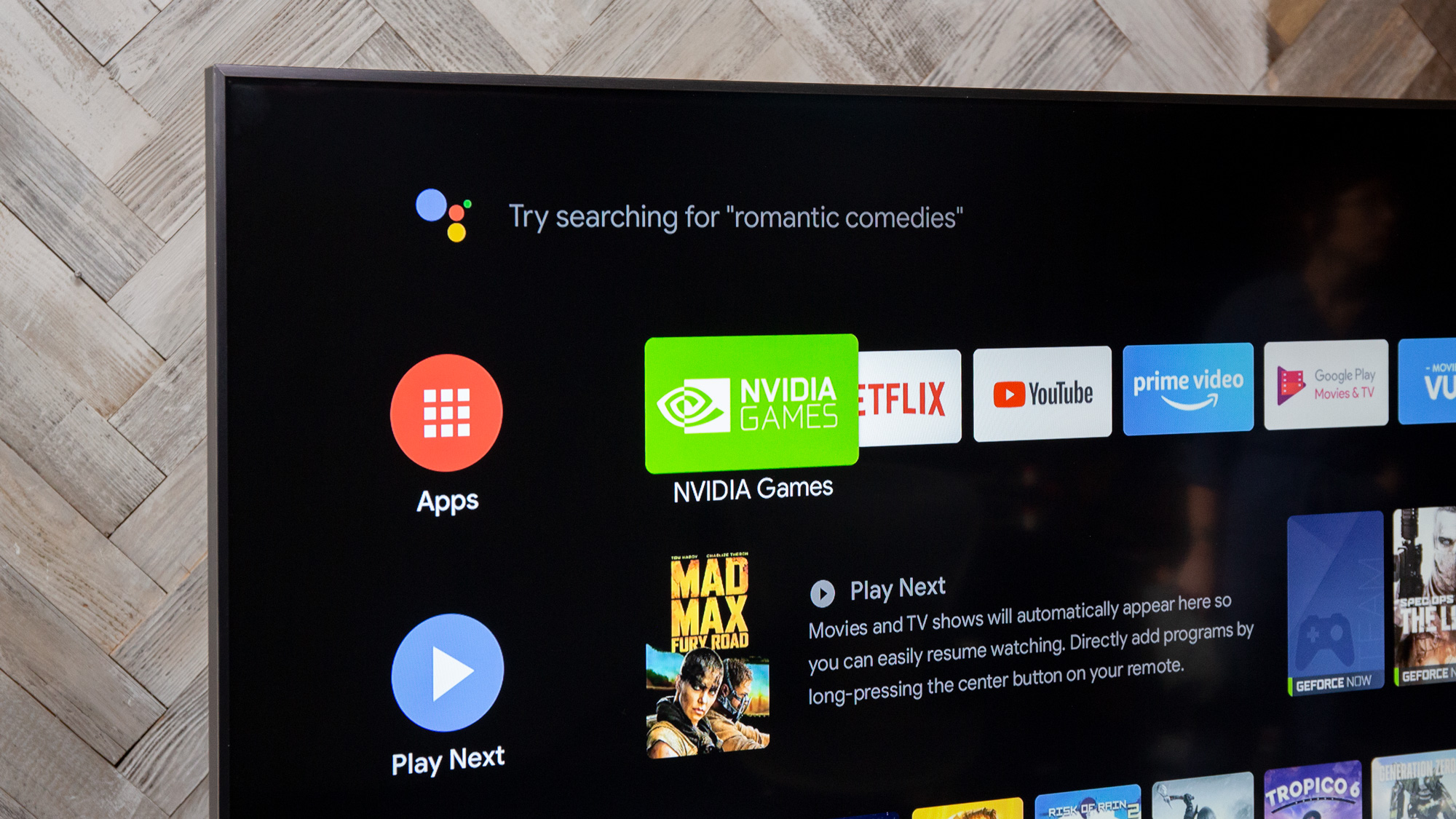
First off, you should be aware that both the Shield TV and the Shield TV Pro have smart- home functionality. You can program Google Routines into either device, and both are fully compatible with both Google Assistant and Alexa. However, the default Shield TV can't act as a smart-home hub by itself; you still need to run a hub through a phone, computer or other device.
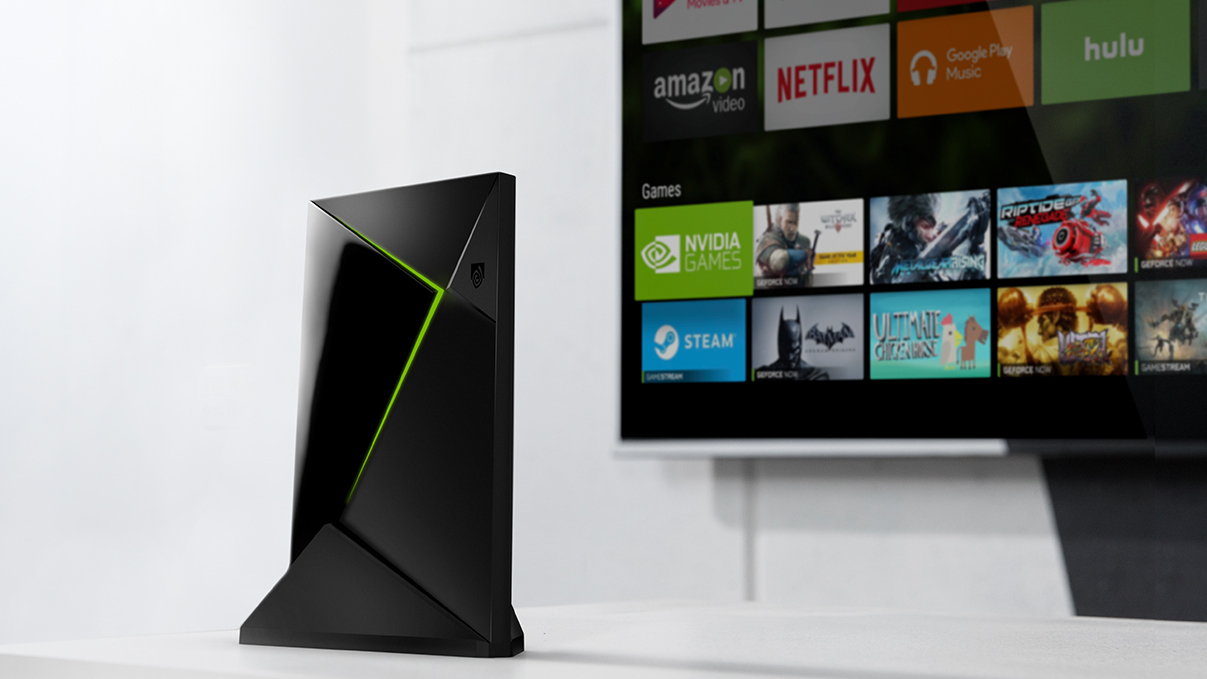
The Shield TV Pro, on the other hand, can be a hub for Samsung SmartThings, thanks to its two USB ports in the back. That means you can use the Shield TV Pro as a command center for a variety of security cameras, light bulbs, motion sensors, smart outlets, programmable buttons and more. If the idea of controlling your whole house from your TV appeals to you, the Shield TV Pro offers you more ways to do so.
NVIDIA Shield TV Pro $199.99
4K HDR Streaming Media Player, High Performance, Dolby Vision, 3GB RAM, 2X USB, Works with Alexa
If you want to run a Plex media server, the Shield TV Pro is your only option. To be clear: If you host a media server through your PC or phone, you can access your content with either version of Shield TV. But suppose you're tired of keeping your computer or phone running for hours on end, and would rather keep everything together in a dedicated entertainment device. The Shield TV Pro hooked up to an external hard drive might be just the ticket.
NVIDIA Shield TV $149.99
8GB - 4K HDR Streaming Media Player with Google Assistant
Bottom line
To recap, the Shield TV Pro has a number of advantages over its cheaper cousin:
- USB ports
- More storage and RAM
- Some exclusive games
- Smart-home hub potential
- Plex media server functionality
Just about everything else about the devices is identical — save for the physical design, which is a matter of taste. They both run the same apps; they both let you stream your own games through GeForce Now; they both let you upscale 1080p movies to 4K with a sophisticated AI algorithm; they both come with the same remote; they both let you use any Bluetooth game controller you see fit.
I don't have a strong recommendation between the two devices. I don't personally run smart- home gear, so the regular Shield TV would suit my needs just fine, and I'd use the $50 for a GeForce Now game on Steam. But I also see the appeal of running a Plex server without having my computer on 24/7, a feature for which it might be worth sacrificing an extra game.
Either way, I like the Shield TV line much better than most other streaming players on the market. Take a look at my Apple TV 4K vs. Nvidia Shield TV piece to see how Nvidia beats out the competition.
- Read next: The best streaming video services
Sign up to get the BEST of Tom's Guide direct to your inbox.
Get instant access to breaking news, the hottest reviews, great deals and helpful tips.
Marshall Honorof is a senior editor for Tom's Guide, overseeing the site's coverage of gaming hardware and software. He comes from a science writing background, having studied paleomammalogy, biological anthropology, and the history of science and technology. After hours, you can find him practicing taekwondo or doing deep dives on classic sci-fi.
